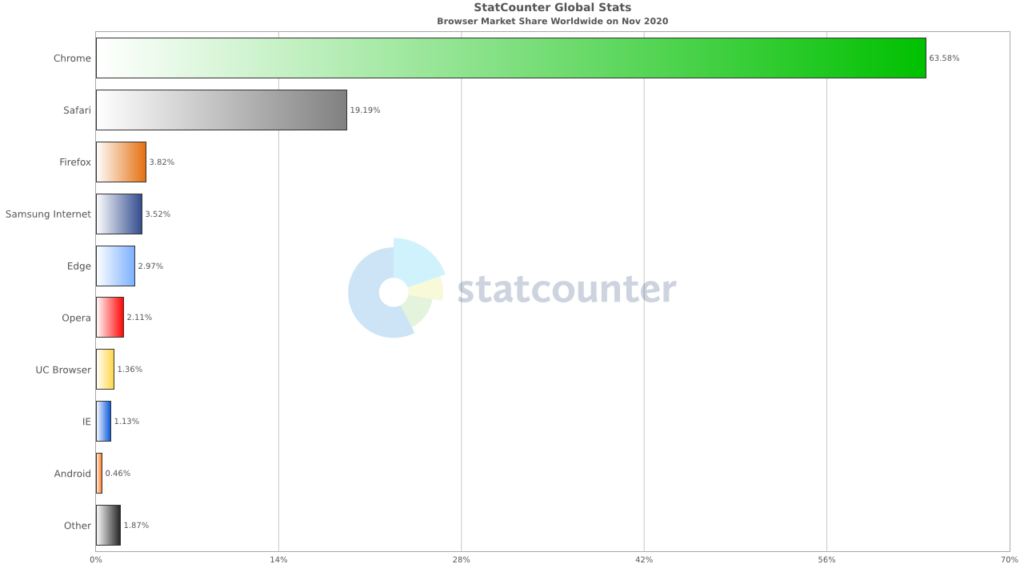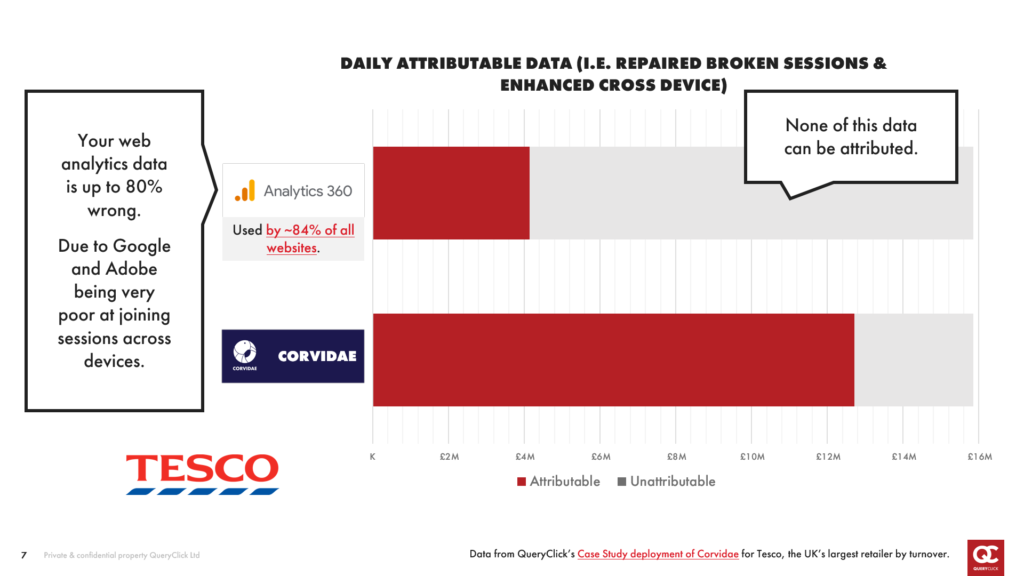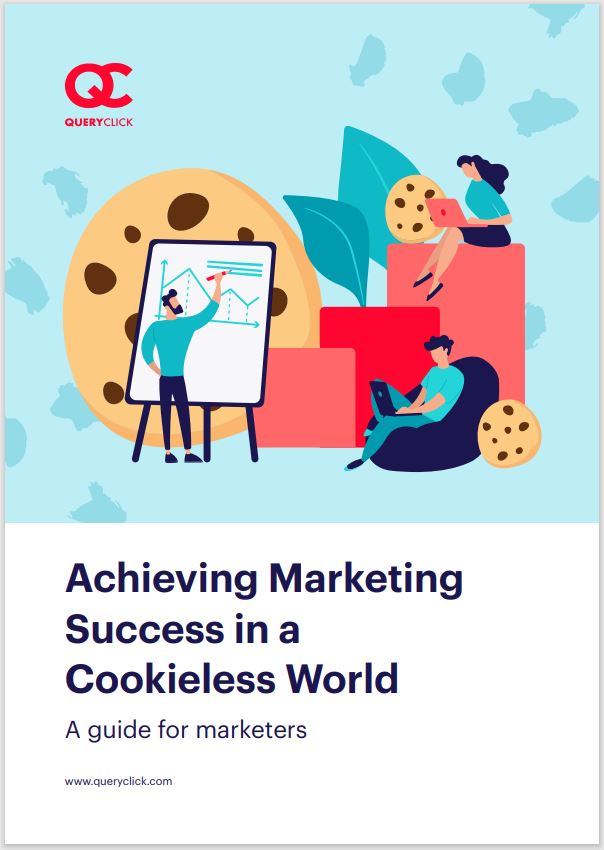What Does The Removal of Third Party Cookies Really Mean?

Google’s decision to announce they will (eventually) end their support of 3rd party cookies is a topic of hot debate in the industry.
From those who see things dropping off a cliff as a result, to those seeing it as a ‘once in a lifetime’ opportunity to reinvent their whole approach to digital marketing on the web – it impacts everyone. But what does it all really mean for digital marketers?
Here are some questions that are top of mind in our discussions with colleagues and customers alike:
- What is the specific change Google is making to 3rd party cookies?
- Are these changes linked in any way to the type of cookie restrictions put in place by Apple or Mozilla?
- Why did Google take this step?
- Is Google suggesting any form of replacement for 3rd party cookies?
- What does this all mean for digital marketers and the industry as a whole?
- Is it likely that a move away from behavioural targeting is on the cards?
- Will Google stop tracking people altogether?
- Will there by a knock-on effect on CPMs as a direct result of the changes?
- How do I get more out of 1st party data going forward?
- Is it possible to better analyse and rebuild my existing cookie data?
- Does QueryClick have a solution for the removal of 3rd party cookies?
Q. What is the specific change Google is making to 3rd party cookies?
Google originally announced it would stop the use of 3rd party cookies in its Chrome browser by 2022 but has more recently announced a delay to this process and targeting a new date of mid-to-late 2023.
The move is seen as a direct response to concerns around protecting user privacy. But Google’s approach to the industry is collaborative because alongside the announcement they have proposed the introduction of a replacement set of standards that will enable advertisers to continue to target digital campaigns. But in a way that doesn’t compromise the privacy of individuals.
The key thing is that all of the soundings from Google are that they won’t switch 3rd party cookies off without a viable alternative being in place for the industry.
Q. Are these changes linked in any way to the type of cookie restrictions put in place by Apple or Mozilla?
In some ways, you could argue that there are parallels here but only in a very outline way, in that they are changes driven by the increasing need to meet concerns around privacy. But that is probably where the similarity ends.
Both Apple (Safari) and Mozilla (Firefox) continue to support cookies but they both have a default setting to block cookies and they can only be enabled by the user themselves. Mozilla led the way on this in 2019 and Apple followed suit with their iOS 14 update in February 2021. The Google strategy, however, is different in that their approach is to retire cookies altogether and go in search of an alternative mechanism to put in its place.
Q. Why did Google take this step?
So, why is this change happening? There are a number of elements that have combined to drive change including:
- Concerns around privacy – increased scrutiny from consumers, and privacy activists, around the ways companies have been utilising 3rd party Cookies to target advertising. Raising issues around transparency and the lack of clear consent
- Legal changes – legislation ranging from GDPR, to the ePrivacy Directive and CCPA have all specifically targeted how brands and advertisers gain consent via Cookies and process data for marketing purposes
- Ad blocking preferences – according to Statista 26% of internet users are using ad blocking technology on their browsers driven by concerns around privacy, which is also diminishing the role of 3rd party Cookies
- Building trust with consumers – people are more aware of their online privacy than ever. And, ultimately, for Google it is about regaining trust – on the back of research from the Pew Institute that suggests that 81% of users say that the potential risks they face because of data collection outweighs the benefits
And the seismic changes from Apple and Google are really changing the shape of the game for marketers. With radical changes to user identification, limited attribution windows, loss of cross domain tracking and time delays in data reporting that combine to mean significant challenges in reporting ROAS.
Q. Is Google suggesting any form of replacement for 3rd party cookies?
Yes – Google is proposing the Privacy Sandbox initiative.
Essentially the premise is to create web technologies that balance the often conflicting needs to protect people’s online privacy and – at the same time – give marketers the tools they need to continue to be targeted in the way that they create and measure digital campaigns.
Q: What does this all mean for digital marketers and the industry as a whole?
Regardless of what lens you view this one through, it would be hard to make a case for saying anything other than that the impact is likely to be substantial. The sheer scale of Google’s reach guarantees that.

Estimates vary as to the size of Google’s share of the browser market but tend to coalesce in the region of 64% on desktop and 41% on mobile. Which gives us a feel for the impact the change might have. But coverage is only one side of the equation.
The truth is that for the best part of three decades marketers have built entire strategies around the power of the 3rd party cookie. Driving their entire approach to
- cross-site targeting
- behavioural approaches
- user analytics
- and re-targeting.
There is no doubt that this landscape is going to be significantly altered as a result of these changes.
Q: Is it likely that a move away from behavioural targeting is on the cards?
We think so.
In reality, this change removes the capability to reach consumers deemed to have the highest propensity to convert based on showing an interest in an advertiser’s products or services.
However, it is a move that has proved successful for publishers, with the New York Times famously moving away from behavioural advertising within Europe in 2018 – partly in response to GDPR, with a move back towards contextual and geo-located advertising. Without any reported reductions in advertising revenues.
This type of shift away from behaviour-based programmatic targeting opens the door for publishers to take advantage of their own 1st party data and focus on contextual, geo-located and private marketplace (PMP) deals directly with advertisers.
This would allow marketers to circumvent 3rd party advertising platforms and directly negotiate with the end inventory owner, increasing transparency and reducing hidden ad-tech stack costs. It’s also possible this change will help to reduce the duopoly of Facebook and Google’s stranglehold on the online advertising world.
But we need to wait and see how this develops.
Q: Will Google stop tracking people altogether?
In short – probably not, but time will also tell us more here.
What Google are signalling at this point in time is a move away from tracking individual users, or at least on a 3rd party basis. But the type of alternatives that they are exploring as part of their Privacy Sandbox initiative are linked to investigating the use of cohort-based advertising. Where they effectively ‘park’ the concept of one-to-one personalisation and effectively ‘hide’ individuals inside groups that share common interests.
This is the approach they are taking with their Cohorts (FLoC) initiative – and Google claim that this form of targeting has at least 95% of the conversions per dollar spent when compared to cookie-based advertising.
Q: Will there be a knock-on effect on CPMs as a direct result of the changes?
This remains to be seen and is probably going to be heavily dependent on the shape of the alternative solutions that Google comes up with.
But there is the danger that, as cookies are removed, marketers could go direct to publishers to buy more ad space direct – with the knock-on effect that less inventory is available via programmatic options. Which would be likely to drive CPMs up as a result.
Q. How do I get more out of 1st party data going forward?
There has never been a better opportunity to revisit your approach to the way that you gather and analyse 1st party data.
In some ways, an over-reliance on the power of 3rd party cookies has removed some of the focus on this. And in practice being better at managing it opens a whole world of possibilities around personalisation.
Using the 1st party data from your own analytics platform is a great start – with the strong caveat that you need to improve and rebuild it – but expanding on that 1st party data repository with richer data will be vital to help inform on-going targeting.
So, get creative and start activating 1st party insights that are hidden in CDP platforms, CRM and MarTech systems and offline campaign interactions. And really understand what makes your customers tick and their preferences and behaviours. Then use this newly activated data to begin to target similar cohorts – using similar approaches to the Floc principle being explored by Google in their Privacy Sandbox.
Q. Is it possible to better analyse and rebuild my existing cookie data?
Despite all of the furore surrounding the changes to 3rd party Cookies themselves it is pretty well documented by now that relying on Cookies – even 1st party Cookies is problematic. And in reality, they do a poor job of tracking customer journeys.

Let’s try and put that in context for you. Take Google’s approach to collecting the vast majority of digital marketing data which is based on a pixel-plus-cookie based approach.
This session-based technique is based on tracking a device accessing a specific website or other web property. Not around identifying an individual – who just happens to be on a complex, multi-device journey.
And as a result, it does a poor job of attribution – in fact, it generates data that is around 80% incorrectly attributed as shown here.
In this example – for a leading UK food and clothing retailer – QueryClick was able to use its Corvidae platform and take existing Google 360 data and effectively rebuild it. And adjust the level of attributable spend from £4.1m to £13.6m in the process.
So, rebuilding your core data is foundational.
Q: Does QueryClick have a solution for the removal of 3rd party cookies?
We do.
But it’s part of an ongoing, wider approach to effective performance marketing that had its genesis well before the decision on 3rd Party cookies was announced. For a no-obligation discussion on your own specific requirements contact us here.
How To Achieve Marketing Success in a Cookieless World
Own your marketing data & simplify your tech stack.
Have you read?
As you will have likely seen, last week Google released the March 2024 Core Algorithm Update. With it, comes a host of changes aiming to improve the quality of ranking...
After a year of seemingly constant Google core updates and the increasingly widespread usage of AI, the SEO landscape is changing more quickly than ever. With this rapid pace of...
Given the fact that Google has recently blocked third-party cookies from 1% (or 30 million) Google Chrome users, and their entire removal is expected by the end of Q3 of...




